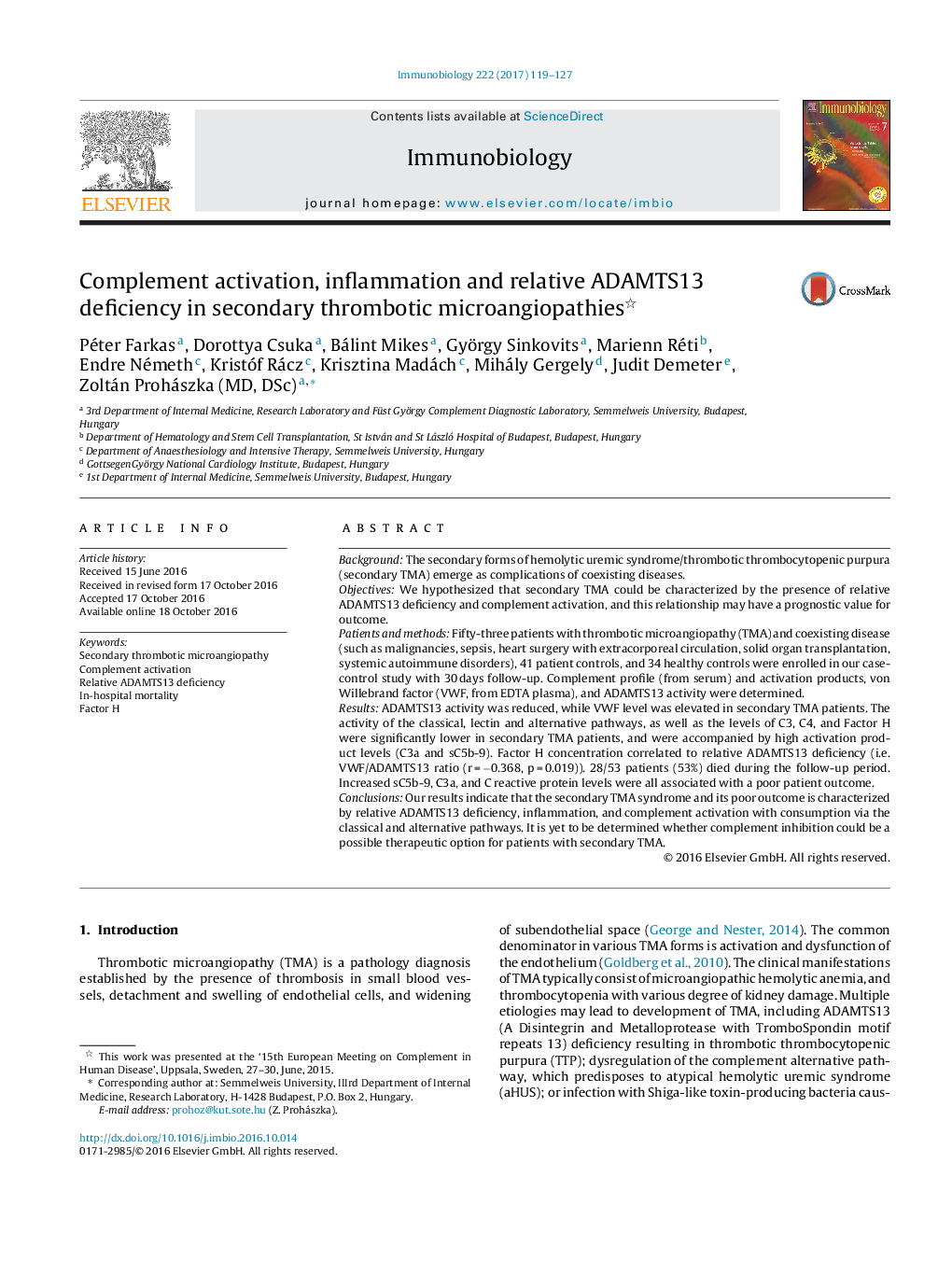| Article ID | Journal | Published Year | Pages | File Type |
|---|---|---|---|---|
| 5532650 | Immunobiology | 2017 | 9 Pages |
BackgroundThe secondary forms of hemolytic uremic syndrome/thrombotic thrombocytopenic purpura (secondary TMA) emerge as complications of coexisting diseases.ObjectivesWe hypothesized that secondary TMA could be characterized by the presence of relative ADAMTS13 deficiency and complement activation, and this relationship may have a prognostic value for outcome.Patients and methodsFifty-three patients with thrombotic microangiopathy (TMA) and coexisting disease (such as malignancies, sepsis, heart surgery with extracorporeal circulation, solid organ transplantation, systemic autoimmune disorders), 41 patient controls, and 34 healthy controls were enrolled in our case-control study with 30 days follow-up. Complement profile (from serum) and activation products, von Willebrand factor (VWF, from EDTA plasma), and ADAMTS13 activity were determined.ResultsADAMTS13 activity was reduced, while VWF level was elevated in secondary TMA patients. The activity of the classical, lectin and alternative pathways, as well as the levels of C3, C4, and Factor H were significantly lower in secondary TMA patients, and were accompanied by high activation product levels (C3a and sC5b-9). Factor H concentration correlated to relative ADAMTS13 deficiency (i.e. VWF/ADAMTS13 ratio (r = â0.368, p = 0.019)). 28/53 patients (53%) died during the follow-up period. Increased sC5b-9, C3a, and C reactive protein levels were all associated with a poor patient outcome.ConclusionsOur results indicate that the secondary TMA syndrome and its poor outcome is characterized by relative ADAMTS13 deficiency, inflammation, and complement activation with consumption via the classical and alternative pathways. It is yet to be determined whether complement inhibition could be a possible therapeutic option for patients with secondary TMA.
